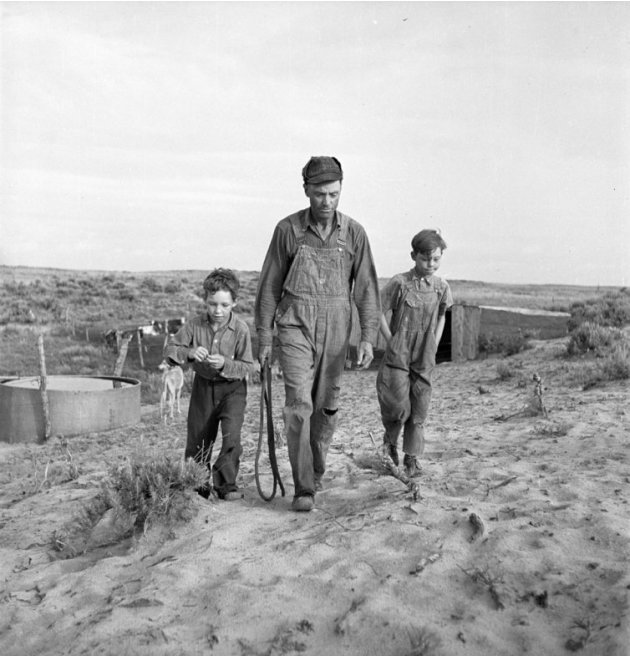The US department of agriculture has declared a natural disaster in 26 states where the Midwest drought has done considerable damage to this year's corn crop.
High temperatures and drought in the farm belt have devastated farms and are pushing up the price of corn and other crops.This is both as bad as it sounds and not quite as bad as it sounds. As Hannah Poturalski, a staff writer with the Middletown Journal in Ohio puts it: "Ohio is among 29 states with counties now designated as natural disaster areas due to the drought." That is to say, it's not the entire state that has declared drought condition, but counties within it have. Still, when you look at the map, the situation is pretty severe.
According to the US Drought Monitor on July 05, 2012, "Analysis of the latest drought monitor data revealed that 46.84 percent of the nation’s land area is in various stages of drought, up from 42.8 percent a week ago...Looking only at the 48 contiguous states, 55.96 percent of the country’s land area is in moderate drought or worse." in the July 10, 2012 news release, the Drought Monitor notes:
[W]ith the hot weather that covered much of the central and eastern United States, only a few scattered areas of dryness and drought experienced significant improvement. In addition, the areas with the greatest temperature anomalies (average daily maxima 10 to 13 degrees above normal) generally coincided with an area of scant rainfall across the Midwest, northwestern Ohio Valley, and southern Great Plains, resulting in another week of widespread deterioration and expansion of dryness and drought in these regions.That's about 4800 square miles or 12545 square kilometres burned over so far this year. The Drought Monitor has also produced the following animation of drought conditions in the US over the last 12 weeks:
In the hottest areas last week, which were generally dry, crop conditions deteriorated quickly. In the 18 primary corn-growing states, 30 percent of the crop is now in poor or very poor condition, up from 22 percent the previous week. In addition, fully half of the nation’s pastures and ranges are in poor or very poor condition, up from 28 percent in mid-June. The hot, dry conditions have also allowed for a dramatic increase in wildfire activity since mid-June. During the past 3 weeks, the year-to-date acreage burned by wildfires increased from 1.1 million to 3.1 million as of this writing.
There is some hope for rain in some area this week, but overall, this means trouble. With corn crops not producing ears (check out the Al Jazeera footage, above), and with pasture, soy, and other crops affected, the industrial food system is going to be seriously strained this year. Combined with big money building speculative bubbles in the food system, we could be facing a doubling or better of food costs this year.
According to the National Oceanic and Atmospheric Administration (NOAA), the period from January through June was "the warmest first half of any year on record for the contiguous United States."
The average temperature was 52.9 degrees Fahrenheit, or 4.5 degrees above average, NOAA said on Monday. Twenty-eight states east of the Rockies set temperature records for the six-month period.
A heat wave blistered most of the United States in June, with more than 170 all-time temperature records broken or tied during the month. On June 28 in Norton, Kan., for instance, the temperature reached 118 degrees, an all-time high. On June 26, Red Willow, Neb., set a temperature record of 115 degrees, eclipsing the 114-degree mark set in 1932.
I'm not saying that it will get as bad as this 1942 Alfred Eisenstaedt photo of the dustbowl, at least not this year.
 |
| unpublished, from Life |
But don't think it can't happen again. Dr. David Schindler, over at the University of Alberta, has pointed out that the Twentieth Century was the wettest century in the Pallister Triangle in the last 10,000 years. It has also been the only century we've farmed in the Triangle, so our perceptions are kind of skewed. And the past century also had four major drought events, including the one above. So Global Climate Change is going to matter here in North America.


No comments:
Post a Comment